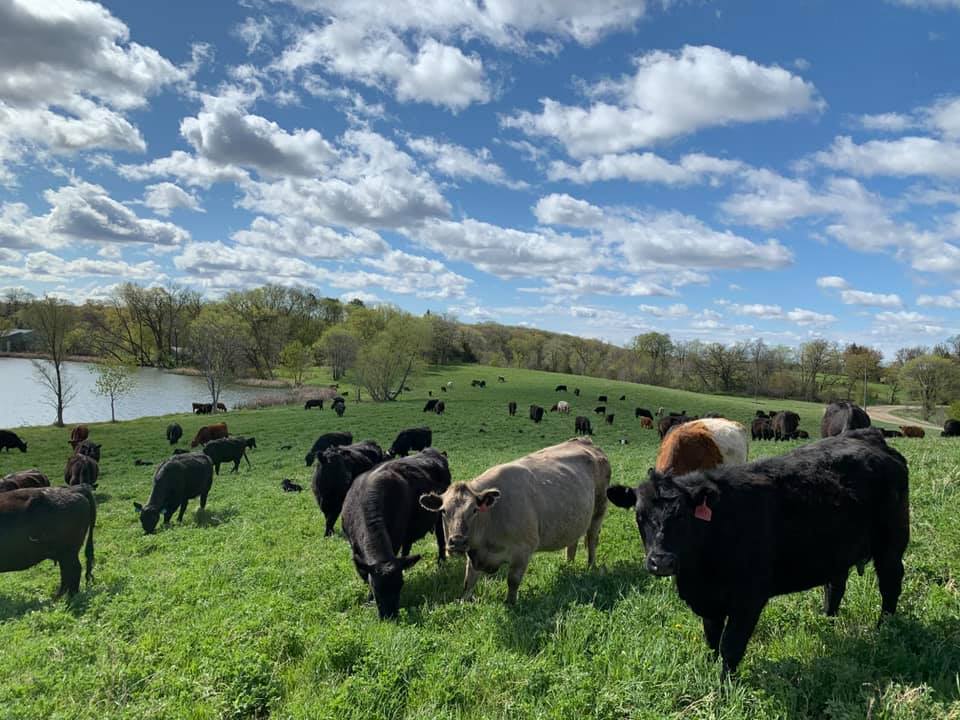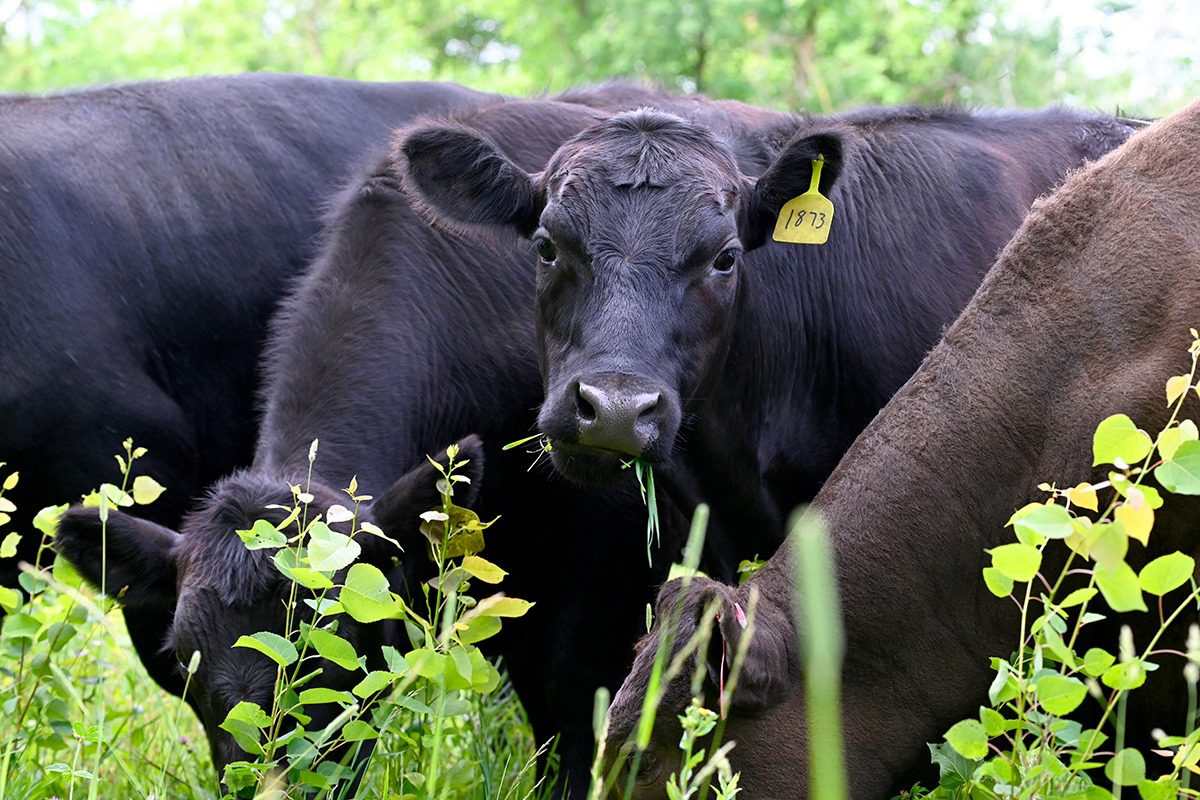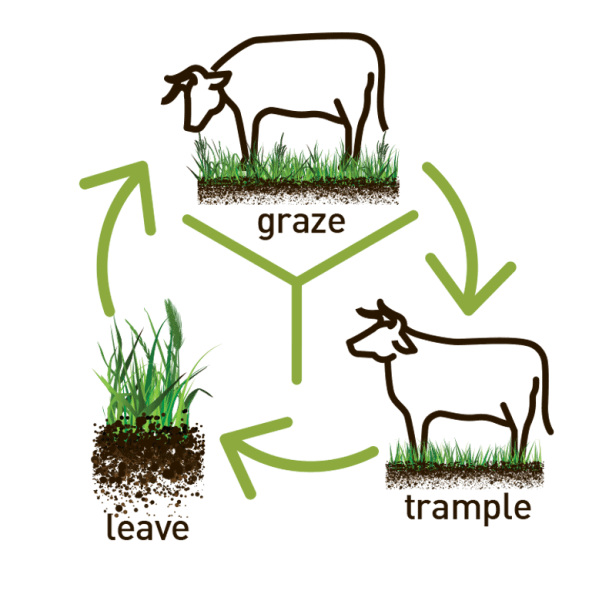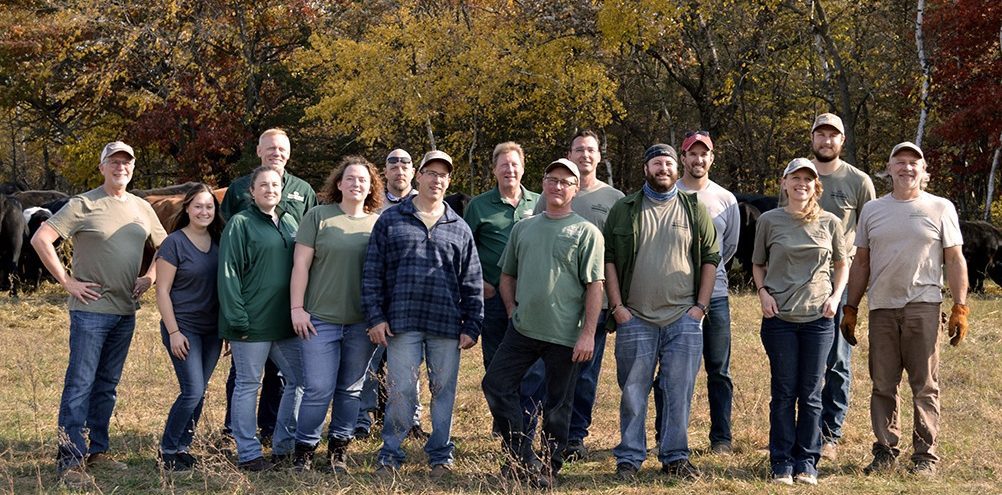When Matt Maier, owner of Thousand Hills Lifetime Grazed returned to his family’s farm in the early 2000s, he found a damaged landscape: the result of tilling and a ruthless rotation of monoculture crops on all the neighboring farms. “My beginnings into grass-fed beef meant urgently recapturing and converting as many acres as possible from these extractive practices, and re-establishing diverse grasslands for grazing,” Matt shares. “We began with 120 acres from our home farm and have now expanded to over 1,000 acres affecting 13 different small farm landowners.”

They now source cattle from an additional 50 hand-selected, like-minded U.S. family farms. Each of these farms are deeply committed to their own community project of regenerating land to provide for their children and grandchildren.
“What began as a passion to simply share the nutritional benefits of Lifetime Grazed 100% Grass-Fed Beef with more people has evolved into a full embrace of regenerative agriculture—with its many critical benefits to people and planet,” says Matt. Learn what grass-fed, grass finished beef means to Matt, as well as how they use regenerative agriculture to support environmental health and stimulate rural economies.
Grass-Fed, Grass Finished
Labels on grass-fed beef products are often misleading for consumers. Just because the label says “grass-fed,” it does not mean that the cow consumed nothing but grass – a large percentage of the cow’s diet could have included grain or grain byproducts, which are not healthy for cattle and can result in reduced quality and nutritional value of the meat.
Thousand Hills Lifetime Grazed offers 100% pasture-raised, grass-fed beef without any confinement feeding, GMO plants, or grain byproducts. Their cattle are always on the land, managed holistically, all while regenerating soil and grasslands.

Organic Regenerative Pasture Grazing and the Rule of Thirds
Regenerative agriculture is a set of holistic land management practices and grazing strategies that seek to restore and enhance the natural resources that are used, rather than deplete them. Regenerative agriculture looks holistically at the agro-ecosystem to build soil health, increase clean and safe water runoff, improve biodiversity and ecosystem resiliency, and increase carbon draw-down.
Soil destruction creates a vicious cycle, in which less carbon is stored, the world gets hotter, and the land is further degraded. Thousand Hills’ regenerative grazing process helps to solve this problem by applying the rule of thirds: graze a third, trample a third and leave a third. This promotes photosynthesis in the plant by forcing it to regrow, because once a plant is fully grown, it goes dormant and the photosynthetic process does not occur. This moves the carbon from the atmosphere into the soil which is fueled by carbon molecules, in return those microorganisms feed all the plants, those plants feed the animals, and then feed us. Healthier soil, healthier cows, and a healthier planet leads to a healthier you.

Soil Health
Similar to the human gut biome, healthy soil depends upon a thriving community of healthy bacteria, fungi, and microbes to remain balanced. Microorganisms give the soil structure and help it to retain more water. Plants with healthy soil become more nutrient-rich, drought-tolerant, and resistant to pests. Meanwhile, these plants store carbon in their long, thriving roots.
Cattle play a vital role in soil health. Their hooves gently stir and aerate the soil; gentle nibbling triggers plants to absorb more carbon into their roots; fresh manure spreads seeds and contributes to the vibrant microbial communities in the soil. Through carefully planned grazing that mimics the patterns of wild animal herds, ranchers ensure the land is not overgrazed, while producing healthier crops with improved yields.
Watersheds
Clean water is one of the top environmental priorities worldwide, impacting human health, biodiversity, and survival. How we farm matters. Healthier soil means healthier waterways. Regenerative farming practices benefit water quality and quantity by reducing chemical pesticide pollution impacting our ground and surface water. In turn, this reduces harmful algae blooms and drinking water pollution. Like a sponge, healthy soil holds 20 times its weight in water — meaning less runoff to contaminate waterways and improved groundwater recharge that makes farms and ranches more resilient to flood and drought cycles. Regenerative agriculture strategies like cover cropping and reduced tillage further improve the watershed system.

Rural Economies
On a macro-level, regenerative agriculture positively impacts rural communities. The trend has encouraged a new generation of farmers and ranchers to get into a sustainable family business. Ranching is a more profitable venture with less money spent on feed, farm equipment, pesticides, and veterinary care. Cooperative communities share knowledge and aggregate their market power to ensure greater profits for all.
Regenerative farms are environmentally responsible, socially accountable, and interconnected with the communities they serve, hiring locally and undertaking philanthropic projects in their own backyards.
Look for Thousand Hills Lifetime Grazed grass-fed beef products at your neighborhood Kimberton Whole Foods!





